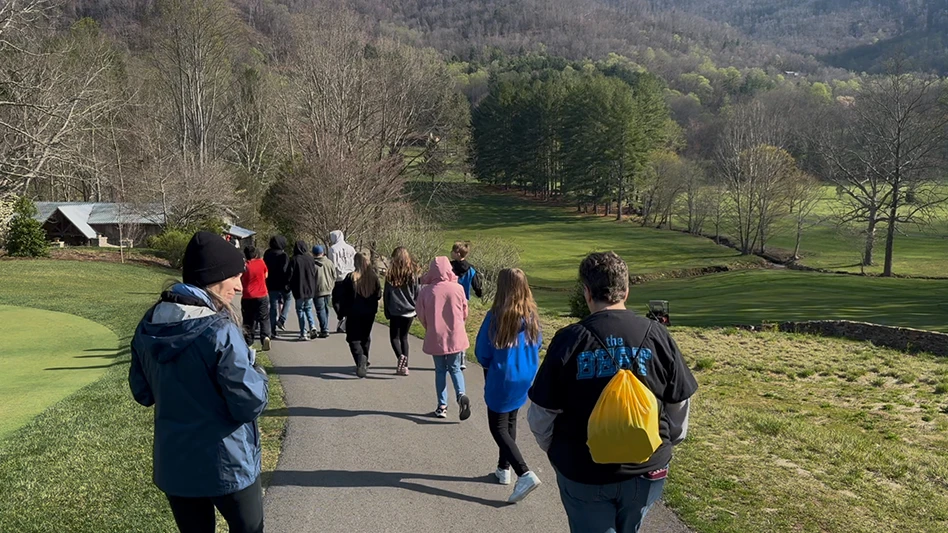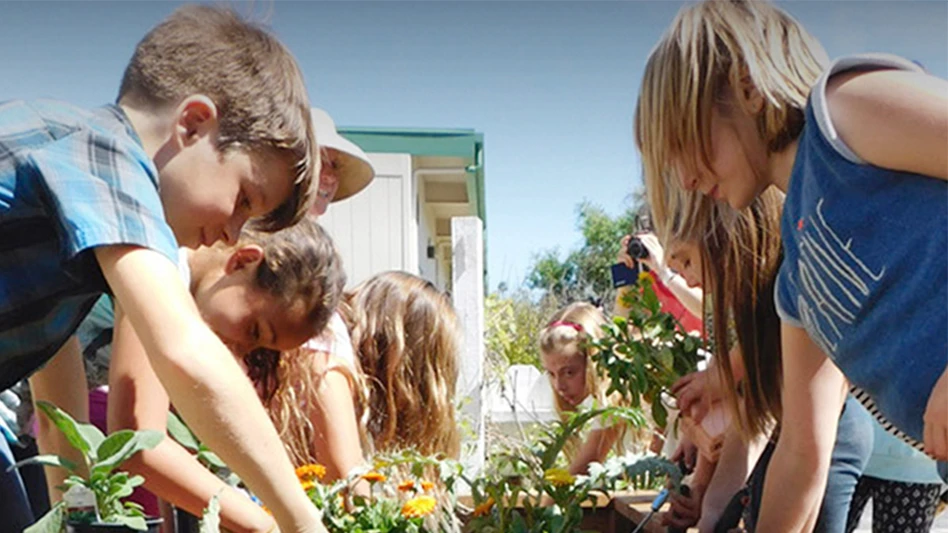
Superintendents can’t stress enough to their maintenance crews the health dangers of working in the sun and in hot, humid weather, and team members need to lookout for the signs of heat-related stress not only in themselves, but in their coworkers, as well.
 Scott Dey has spent much of his nearly two-decade turf industry career in Southern California, six of which at as superintendent at Mission Viejo Country Club. During the height of the season his team numbers 28, including an assistant, two mechanics, two clubhouse workers, 13 staffers who work full time on the golf course, and nine part timers.
Scott Dey has spent much of his nearly two-decade turf industry career in Southern California, six of which at as superintendent at Mission Viejo Country Club. During the height of the season his team numbers 28, including an assistant, two mechanics, two clubhouse workers, 13 staffers who work full time on the golf course, and nine part timers.
Dey’s club is located roughly seven miles from the Pacific Ocean, and a few miles closer to Los Angeles than San Diego. Much of the course’s layout sits in a creek bed, offering minimal air movement unless the winds are blowing out of the north. During the summer months, the region’s temperature swells into the mid-90s.
So the dangers of sun and heat exposure are real issues for Dey and his crew. That’s way each year, Dey delivers a heat-safety presentation to his team, which he considers just as critical as pesticide safety training.
“We take one day in January or February … We have an outside [safety training] company that come in and goes through pesticide safety training,” he says. “But then we have a portion in there for a heat illness prevention plan and we talk about the risk factors, how to be careful, the differences between an illness and a heat stroke. In the summertime, we’ll make sure to hit it again.”
The presentation includes a video -- in both English and Spanish -- that includes reminders about heat-related issues.
Southern California’s warm season typically extends from mid-June to mid-October and Dey makes it a priority to regularly include reminders about the heat in his morning announcements to the crew.
“We’ll remind the guys. ‘Make sure you’ve got your water,’” he says, “And don’t drink lots of caffeine.
“We buy those towels that can help keep them cool and just remind them about taking their breaks and just being smart when they’re out [on the course],” he adds. “And that If they don’t feel right to let us know.”
Crew members are encouraged to keep an eye on one another during hot weather. “We try and use the buddy system,” Dey says. “We tell the guys: ‘Communicate with us, talk to us. If you’re not feeling right, let us know.’”
To date, Dey has yet to deal with a case of heatstroke on the job, which is a testament to his safety training regimen and constant reminders about heat-related health risks. Though fortunate, he doesn’t dismiss the dangers of working prolonged hours in Southern California’s sun and heat, adding anyone can be stricken by a heat-related illness.
“You kind of need to drill it into the guys’ brains,” he says. ‘Don’t disregard the symptoms. Pay attention.”
 Scott Dey has spent much of his nearly two-decade turf industry career in Southern California, six of which at as superintendent at Mission Viejo Country Club. During the height of the season his team numbers 28, including an assistant, two mechanics, two clubhouse workers, 13 staffers who work full time on the golf course, and nine part timers.
Scott Dey has spent much of his nearly two-decade turf industry career in Southern California, six of which at as superintendent at Mission Viejo Country Club. During the height of the season his team numbers 28, including an assistant, two mechanics, two clubhouse workers, 13 staffers who work full time on the golf course, and nine part timers.Dey’s club is located roughly seven miles from the Pacific Ocean, and a few miles closer to Los Angeles than San Diego. Much of the course’s layout sits in a creek bed, offering minimal air movement unless the winds are blowing out of the north. During the summer months, the region’s temperature swells into the mid-90s.
So the dangers of sun and heat exposure are real issues for Dey and his crew. That’s way each year, Dey delivers a heat-safety presentation to his team, which he considers just as critical as pesticide safety training.
“We take one day in January or February … We have an outside [safety training] company that come in and goes through pesticide safety training,” he says. “But then we have a portion in there for a heat illness prevention plan and we talk about the risk factors, how to be careful, the differences between an illness and a heat stroke. In the summertime, we’ll make sure to hit it again.”
The presentation includes a video -- in both English and Spanish -- that includes reminders about heat-related issues.
Southern California’s warm season typically extends from mid-June to mid-October and Dey makes it a priority to regularly include reminders about the heat in his morning announcements to the crew.
“We’ll remind the guys. ‘Make sure you’ve got your water,’” he says, “And don’t drink lots of caffeine.
“We buy those towels that can help keep them cool and just remind them about taking their breaks and just being smart when they’re out [on the course],” he adds. “And that If they don’t feel right to let us know.”
Crew members are encouraged to keep an eye on one another during hot weather. “We try and use the buddy system,” Dey says. “We tell the guys: ‘Communicate with us, talk to us. If you’re not feeling right, let us know.’”
To date, Dey has yet to deal with a case of heatstroke on the job, which is a testament to his safety training regimen and constant reminders about heat-related health risks. Though fortunate, he doesn’t dismiss the dangers of working prolonged hours in Southern California’s sun and heat, adding anyone can be stricken by a heat-related illness.
“You kind of need to drill it into the guys’ brains,” he says. ‘Don’t disregard the symptoms. Pay attention.”
Get curated news on YOUR industry.
Enter your email to receive our newsletters.Loading...
Latest from Golf Course Industry
- The Aquatrols Company hires marketing manager
- Renovating Bredemus in West Texas
- Renovation starts at Okatie Creek GC at Sun City Hilton Head
- The Fittest Podcast in Turf: Episode 1
- New 6-hole course debuts in Oklahoma
- GCSAA announces Grassroots Ambassador Leadership Award recipients
- Reel Turf Techs: David Gummo
- PBI-Gordon promotes two to executive level






